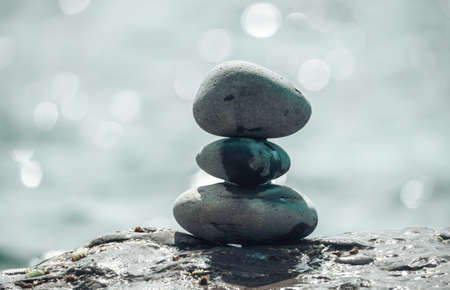1. Introduction
Nature has always played a pivotal role in shaping human culture, beliefs, and the spaces we inhabit. This article explores the fascinating parallels between two distinct traditions: the elemental theory found in Chinese Feng Shui and the superstitions surrounding English gardens. Both systems, though separated by geography and history, reflect a deep reverence for natural forces and their perceived influence on wellbeing and fortune. By comparing these perspectives, we aim to highlight how nature’s presence is interpreted and woven into daily life—whether through careful arrangement of elements or through rituals and lore embedded in the English landscape. Ultimately, this comparison will shed light on how cultural attitudes toward nature inform our design choices and personal environments, revealing both shared values and unique interpretations.
2. Foundations of Feng Shui Element Theory
To understand the role of nature in cultural traditions, we must first explore the core principles underpinning Feng Shui, an ancient Chinese practice that continues to influence environments around the world. Central to Feng Shui is the Five Elements Theory—wood, fire, earth, metal, and water—which serves as a framework for understanding both physical spaces and human emotions. Each element has distinct characteristics, associations, and influences on energy flow (Qi) within a space.
The Five Elements: Interactions and Meanings
The five elements are not just symbolic; they represent dynamic processes and relationships that can either harmonise or disrupt the balance of an environment. This balance is seen as essential for fostering wellbeing and prosperity. The table below outlines each element’s properties and its impact on both surroundings and emotional states:
| Element | Symbolic Representation | Associated Direction | Impact on Environment | Emotional Influence |
|---|---|---|---|---|
| Wood | Growth, vitality | East | Promotes creativity and expansion; encourages healthy plant life | Inspires optimism and motivation |
| Fire | Passion, transformation | South | Adds warmth and energy; can stimulate activity but may overwhelm if excessive | Elicits enthusiasm but may provoke restlessness |
| Earth | Stability, nourishment | Centre/Southwest/Northeast | Provides grounding; supports security and connection with place | Cultivates calmness and trust; may cause stagnation if unbalanced |
| Metal | Clarity, precision | West/Northwest | Adds structure and order; reflects light and enhances focus | Encourages discipline but can induce rigidity or coldness |
| Water | Flow, adaptability | North | Brings fluidity; supports relaxation and reflection but needs containment to avoid chaos | Nurtures intuition but may foster indecision if unchecked |
The Practical Application of Element Theory in Everyday Life
The application of these elemental principles goes beyond mere decoration. In traditional Chinese homes as well as modern interiors influenced by Feng Shui, practitioners carefully select materials, colours, shapes, and spatial arrangements to achieve a desired elemental balance. For example, incorporating wooden furniture or green plants in the eastern part of a home can encourage growth and vitality. Similarly, mirrors (representing water) are placed thoughtfully to foster communication or introspection without causing energetic disruption.
Cultural Context: Linking Nature with Human Experience
This approach reflects an enduring belief that human wellbeing is inseparable from our interaction with natural forces. Unlike some Western design philosophies that emphasise aesthetic taste or historical motifs, Feng Shui’s elemental system directly connects environmental choices with emotional health. As we compare this philosophy with English garden superstitions in later sections, it becomes clear that both traditions use nature as a guide for shaping harmonious living spaces—even if their methods and symbolic languages differ.

3. Roots of English Garden Superstitions
English gardens are more than just picturesque landscapes; they are living repositories of age-old beliefs and superstitions that have been handed down through generations. Many British households, even today, carry on the tradition of planting certain flowers or trees based on their reputed powers to attract good fortune, ward off evil, or convey symbolic meanings within the community. For example, lavender is often grown near doorways, believed to bring peace and protect against negativity. Similarly, planting a rowan tree in the garden has long been considered a safeguard against witches and ill luck—a notion still echoed in rural areas.
Moreover, the choice of flowers often carries deliberate intention beyond mere aesthetics. Marigolds are commonly associated with luck and protection, while snowdrops are thought to bring hope but should never be brought indoors, lest they invite misfortune. The symbolic language of plants—floriography—plays an essential role in English gardening culture. This practice imbues each plant with layers of meaning: roses for love and remembrance, foxgloves for insincerity, and holly as a shield against malevolent spirits during winter’s darkest days.
The intertwining of practical horticulture with superstition is evident in seasonal rituals as well. Many gardeners avoid pruning certain shrubs at specific times due to old tales about disrupting the natural balance or angering nature spirits. Likewise, it is not uncommon for people to whisper wishes or thanks while sowing seeds, blending personal hopes with time-honoured custom. These everyday actions reveal how deeply embedded these beliefs are within the fabric of British gardening life—practices that subtly guide interactions with nature and echo the broader theme of harmony found in Feng Shui traditions.
Nature’s Symbolism: Parallel Interpretations
Both Feng Shui and English garden superstitions assign deep meanings to elements of the natural world, yet their interpretations often reflect different cultural priorities. In this section, we’ll compare how each tradition interprets plants, water, and stones—their symbolic associations, perceived effects on well-being, and how these beliefs influence garden design.
| Natural Feature | Feng Shui Interpretation | English Garden Superstitions |
|---|---|---|
| Plants | Bamboo represents resilience and luck; peonies signal prosperity and romance; citrus trees attract wealth. | Hawthorn wards off evil; rosemary for remembrance; planting rowan trees near the home protects against witchcraft. |
| Water | Flowing water symbolises wealth and abundance; stagnant water brings misfortune; fountains placed at entrances attract positive energy (Qi). | Ponds are believed to invite fairies or spirits; running water can carry away bad luck but should not flow away from the house, lest it take fortune with it. |
| Stones | Rocks anchor energy, offering stability; round stones promote harmony; jagged stones should be avoided as they create ‘sha chi’ (negative energy). | Lucky stones (such as hag stones with holes) are hung to protect homes; standing stones in gardens may mark boundaries or serve as charms against ill fortune. |
The parallels are striking: both traditions view nature not merely as a backdrop, but as an active participant in shaping human destiny. While Feng Shui emphasises balance and flow, English folklore often centres on protection and warding off harm. Even so, the practical outcome is similar—gardeners select plants, arrange water features, and place stones with intention, seeking harmony or safety through a careful dialogue with the landscape. This shared reverence for natural symbolism highlights a universal desire to find meaning—and perhaps a little magic—in the everyday environment.
5. Practical Expressions in Home and Garden Design
When comparing the influence of Feng Shui element theory and English garden superstitions, it becomes clear that both traditions offer practical guidance for arranging homes and outdoor spaces, though their rationales differ. In traditional Chinese households, the five elements—wood, fire, earth, metal, and water—are not merely symbolic but dictate the placement of furniture, entrances, water features, and even the selection of plants. For example, a water feature might be positioned near a home’s entrance to encourage prosperity, while certain rooms may be painted or decorated according to their elemental associations to maintain harmony.
Meanwhile, English garden design is infused with folk beliefs rooted in centuries-old superstitions. The careful positioning of holly bushes near doorways was thought to ward off evil spirits; rosemary by the gate signified remembrance and protection. Even today, many British gardens feature “fairy doors” at the base of trees or avoid planting yew trees too close to the house due to lingering associations with death. These practices reveal an enduring belief that nature’s arrangement can affect wellbeing.
Spatial Planning and Cultural Logic
While Feng Shui employs a methodical approach—using compasses and Bagua maps to analyse energy flow—English superstition tends towards inherited routines and local lore. Yet both systems result in tangible spatial patterns: symmetrical layouts in Chinese courtyards facilitate chi flow; English cottage gardens often have winding paths to confuse mischievous spirits.
Object Placement
Both cultures attach significance to everyday objects. Mirrors in Feng Shui are strategically placed to redirect negative energy; horseshoes above British doors attract good luck. The common thread is a conviction that thoughtfully arranged objects can positively shape daily life.
Modern Adaptations
In contemporary practice, these traditions blend aesthetic considerations with inherited wisdom. Urban Britons may keep a sprig of lavender near their bedside for restful sleep, while modern Chinese flats incorporate indoor plants not just for air quality but also for elemental balance. Thus, whether through scientific-sounding theories or old wives’ tales, both cultures continue to translate nature-based beliefs into practical design choices for their living spaces.
6. Contemporary Relevance and Adaptation
As the UK continues to evolve culturally, the interplay between traditional nature-based beliefs—such as Feng Shui’s element theory and English garden superstitions—and modern living reveals both persistence and transformation. Today, British households often blend these inherited practices with contemporary values, reflecting a nuanced relationship with nature.
Persistence of Tradition in Modern Spaces
Despite technological advancement and urbanisation, many people in the UK still value the presence of natural elements within their homes and gardens. Some homeowners consult Feng Shui specialists to harmonise interior spaces using principles like the five elements, seeking balance and well-being in fast-paced city life. Similarly, echoes of old English garden superstitions linger: planting holly near a door for protection or avoiding hawthorn inside the house remains common among those who cherish folklore.
Adaptation to Contemporary Lifestyles
Modern Britons tend to reinterpret these traditions through a practical lens. Instead of following strict ritual, individuals may select plants associated with good fortune or health not out of fear of bad luck, but as a nod to heritage or personal comfort. The Feng Shui concept of ‘flow’ is often adapted into minimalist interior design trends, focusing on decluttering and maximising natural light rather than adhering rigidly to classical rules.
Integration and Cultural Shifts
The growing awareness of sustainability and environmental wellbeing has encouraged a fresh appreciation for natural systems—sometimes aligning unexpectedly with ancient beliefs. Urban gardeners might incorporate companion planting from folklore because it aligns with eco-friendly pest control methods. Likewise, architects may reference elemental balance when designing biophilic buildings that connect occupants with nature, echoing both Eastern and Western philosophies.
Reflection of Changing Attitudes
This ongoing integration signals a shift from superstition toward mindful engagement with nature. Rather than seeing the land and its cycles as sources of fear or fortune, many in the UK now approach gardening, home layout, and landscape design as conscious choices supporting mental health, community cohesion, and ecological responsibility. In doing so, they honour tradition while shaping new narratives about nature’s role in contemporary British life.
7. Conclusion
In summing up the enduring impact of nature-focused beliefs, it becomes clear that both Feng Shui element theory and English garden superstitions have played significant roles in shaping not only personal living spaces but also wider communal environments. Both traditions, though originating from vastly different cultural contexts, reveal a deep-rooted respect for the influence of natural forces on human well-being. The careful placement of water features, stones, and plants in Feng Shui mirrors the symbolic use of yew trees, winding paths, and particular flowers in English gardens—each reflecting a desire to harmonise with unseen energies or ward off misfortune. While modern design often leans towards aesthetics or functionality, these older beliefs persist, subtly guiding choices and inspiring a sense of continuity with the past. Ultimately, whether through deliberate orientation according to the five elements or the observance of local plant lore, our relationship with nature remains central in creating spaces that nurture both individuals and communities. The ongoing relevance of these practices highlights not just superstition or tradition, but an enduring human need to find meaning, comfort, and balance through our connection with the natural world.


